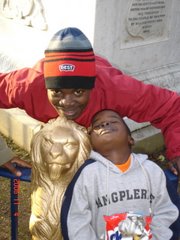Cichlids are members of a group of perciform fish known as the Labroidei alongside the wrasses Labridae, damselfish Pomacentridae, and surfperches Embiotocidae. This very large grouping shares a single key trait: the fusion of the lower pharyngeal bones into a single tooth-bearing structure. A complex set of muscles allows the upper and lower pharyngeal bones to be used as a second set of jaws for processing food, allowing a division of labour between the "true jaws" (mandibles) and the "pharyngeal jaws". Cichlids in particular have evolved to be very efficient feeders that are able to capture and process a very wide variety of food items and this is assumed to be one reason why they are so diverse (see section on diet below).[11]
The particular features of cichlids that distinguish them from the other Labroidei include:[12]
A single nostril on each side of the forehead instead of two.
No bony shelf below the orbit of the eye.
The lateral line organ is divided into two sections, one on the upper half of the flank and a second along the midline of the flank from about halfway along the body to the base of the tail (except for genera Teleogramma and Gobiocichla).
A distinctively shaped otolith.
The small intestine leaves the stomach from its left side, not from its right side as in other Labroidei.
Extensive brood care, with eggs and fry being guarded by one or both parents
Tuesday, January 2, 2007
Subscribe to:
Post Comments (Atom)






No comments:
Post a Comment